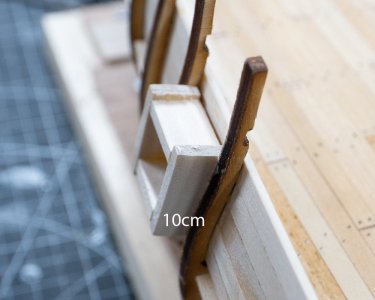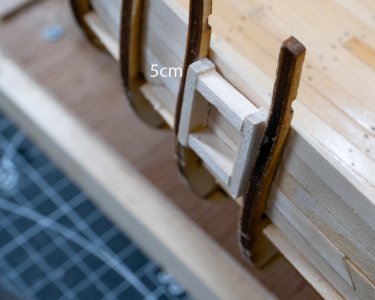-

Win a Free Custom Engraved Brass Coin!!!
As a way to introduce our brass coins to the community, we will raffle off a free coin during the month of August. Follow link ABOVE for instructions for entering.
You are using an out of date browser. It may not display this or other websites correctly.
You should upgrade or use an alternative browser.
You should upgrade or use an alternative browser.
I would suggest the gunports should be protruding no further than the frames.
Thanks Brian, even at 5 mm they're stick out well past the frames. Oh and I meant mm not cm.I would suggest the gunports should be protruding no further than the frames.
- Joined
- Nov 27, 2024
- Messages
- 77
- Points
- 88

I was looking at some photos of your build log to get some better context of your build. I'm not that familiar with the HMS Onterio, but, if the gunports are meant to be perfectly flush with the hull, I agree with Bryian. If they are meant to portrude from the hull a bit, I'd take one of the planks that you'll use for the outer hull, place it next to the gunport on top of the rib/frame, and then mark that thickness on the gun ports. That way you'll have a better idea of how much the gunports will protude on the finished product.
- Joined
- Dec 5, 2022
- Messages
- 800
- Points
- 353

Hey Neil,
in my opinion, gun ports always seal with the hull, otherwise water can collect in the corners and be pressed into the wood. This would make them leaky and, if there is no sealant there, they would start to rot. Question:
Could it be that you have fitted them the wrong way round? It looks like you've attached them from the outside in the picture. If these gun ports have this width, then they must be planked inwards and either planked with the frames, then they are no longer visible but flush, or you sand them down completely to the planks.
Cheers
Günther
in my opinion, gun ports always seal with the hull, otherwise water can collect in the corners and be pressed into the wood. This would make them leaky and, if there is no sealant there, they would start to rot. Question:
Could it be that you have fitted them the wrong way round? It looks like you've attached them from the outside in the picture. If these gun ports have this width, then they must be planked inwards and either planked with the frames, then they are no longer visible but flush, or you sand them down completely to the planks.
Cheers
Günther

On ships built by the British the ports are formed by the frames on each side and sills/lintels on top and bottom. They then get linings on the sides and bottom, but not the top of the port. This is all well and good, but for a plank on bulkhead it requires some jury rigging as in the first sketch below. In any case the planking covers the frames and sills. The edges of the linings are not covered as they are the stops for the ports which are flush with the planking when closed. Is this model the HMS Ontario 1780? Looking at the contemporary drawing of Ontario (22) 1780 at RMG, there are no sweep ports shown. Whether they were just left off the drawing for some reason but actually on the ship, maybe some member here will have better contemporary based information.
Allan
Gun port construction on plank on bulkhead
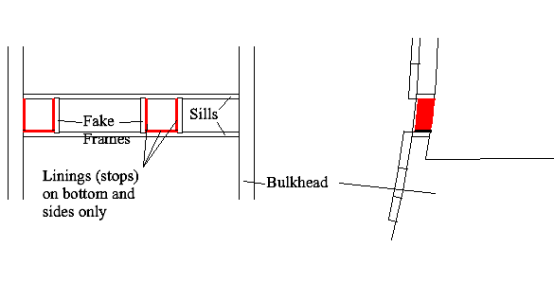
Gunport construction on plank on frame
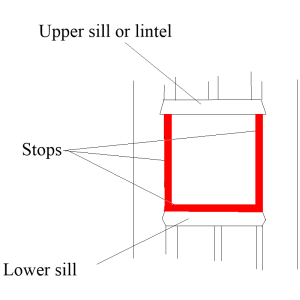
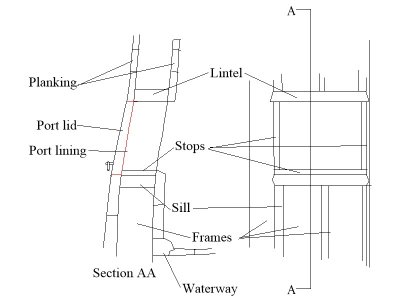
Sweep port sketch below is based on drawing from Peter Goodwin on page 191 if The Construction and Fitting of the English Man of War.
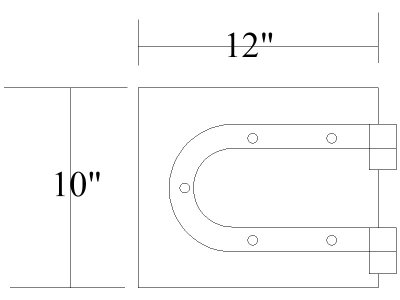
Drawing of Ontario 1780 from the RMG Collections website.
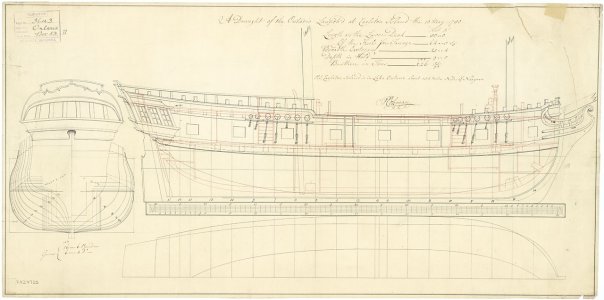
Allan
Gun port construction on plank on bulkhead

Gunport construction on plank on frame


Sweep port sketch below is based on drawing from Peter Goodwin on page 191 if The Construction and Fitting of the English Man of War.

Drawing of Ontario 1780 from the RMG Collections website.

Last edited:
This is true on British ships as well. I have not seen any formulas though with relative sizes of gun ports for various calibers, which would be interesting to see. Contemporary drawings are a good source for sizing the port opening sizes for various calibers. Measuring several ships they seem to be pretty consistent. The sizes I measured are about:In my research on the Swedish ship VASA, I learned that the dimensions of its gun ports decreased in size as the size of the cannons decreased.
32 pounders 33" up and down X 40" fore and aft
24 pounders 31: up and down X 39: fore and aft
18 pounders 30" up and down X 36" fore and aft
12 pounders 29" up and down X 32" fore and aft
9 pounders 25" up and down X 27" fore and aft
If these are slightly off, they should still be a relatively good indication of the various sizes.
Allan
If I understand your question correctly, you’re asking about the length of the gunport framing through the side of the ship, rather than height and width. While Allan’s description is historically accurate for actual ship construction, what I have observed on a number of kits and builds (as per the instructions) is that the gun port is cut out of the planking with the lining going all the way through and sanded flush. Probably not historically accurate, but I think it explains what you see in the instructions.
The reason yours seems to be standing so proud is, I think, because it is butted against one layer of planking (vice going through) and the other (outer) layer of planking is not yet installed.
The alternative, and possibly easier/more accurate, method would be to sand your gunport frame down flush with the frame, open the gunport on the interior planking, add the exterior planking, then open the port on the exterior planking.
All of that is assuming I understood your question correctly.
The reason yours seems to be standing so proud is, I think, because it is butted against one layer of planking (vice going through) and the other (outer) layer of planking is not yet installed.
The alternative, and possibly easier/more accurate, method would be to sand your gunport frame down flush with the frame, open the gunport on the interior planking, add the exterior planking, then open the port on the exterior planking.
All of that is assuming I understood your question correctly.
From looking a pictures in the booklet it comes with they do not protrude either side.I was looking at some photos of your build log to get some better context of your build. I'm not that familiar with the HMS Onterio, but, if the gunports are meant to be perfectly flush with the hull, I agree with Bryian. If they are meant to portrude from the hull a bit, I'd take one of the planks that you'll use for the outer hull, place it next to the gunport on top of the rib/frame, and then mark that thickness on the gun ports. That way you'll have a better idea of how much the gunports will protude on the finished product.
I was planking the transom and while bending the planks and waiting for glue to dry I thought I'd assemble the 16 gun port frames.
If I wasn't supposed to use these planks for the gun ports, then what were they for?
I have 12 1.5 x 6 mm planks yet there's no mention of them in the parts list.
I'm thinking this kit is a bit above my pay grade.
Thanks Neil
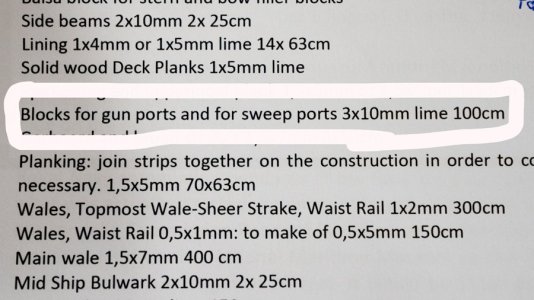
On further reading the instructions that say to use the two 50cm long 3x10 mm strips, the gun ports are attached in between the internal and external planking. So the ports are glued to the outside of the internal planking, then the ports are cut from the outside in.If I understand your question correctly, you’re asking about the length of the gunport framing through the side of the ship, rather than height and width. While Allan’s description is historically accurate for actual ship construction, what I have observed on a number of kits and builds (as per the instructions) is that the gun port is cut out of the planking with the lining going all the way through and sanded flush. Probably not historically accurate, but I think it explains what you see in the instructions.
The reason yours seems to be standing so proud is, I think, because it is butted against one layer of planking (vice going through) and the other (outer) layer of planking is not yet installed.
The alternative, and possibly easier/more accurate, method would be to sand your gunport frame down flush with the frame, open the gunport on the interior planking, add the exterior planking, then open the port on the exterior planking.
All of that is assuming I understood your question correctly.
I guess my way forward is to cut the ports I've made to just proud of the thickest part of the bulkheads, then sand everything flush ready for the external planking.?
Thanks Neil
Thanks Alan, there are 5 sweep ports on each side, also two sheave ports each side.On ships built by the British the ports are formed by the frames on each side and sills/lintels on top and bottom. They then get linings on the sides and bottom, but not the top of the port. This is all well and good, but for a plank on bulkhead it requires some jury rigging as in the first sketch below. In any case the planking covers the frames and sills. The edges of the linings are not covered as they are the stops for the ports which are flush with the planking when closed. Is this model the HMS Ontario 1780? Looking at the contemporary drawing of Ontario (22) 1780 at RMG, there are no sweep ports shown. Whether they were just left off the drawing for some reason but actually on the ship, maybe some member here will have better contemporary based information.
Allan
Gun port construction on plank on bulkhead
View attachment 535968
Gunport construction on plank on frame
View attachment 535970
View attachment 535971
Sweep port sketch below is based on drawing from Peter Goodwin on page 191 if The Construction and Fitting of the English Man of War.
View attachment 535969
Drawing of Ontario 1780 from the RMG Collections website.
View attachment 535972
Some more "data" for consideration: (This is the response I received from Fred Hocker concerning the VASA's ports)
"...the ports on the lower deck and the square ports in the transom are about 72-75 cm wide and 74-77 cm tall (interior of the opening; the port lid would be about 10 cm/4 inches larger in both dimensions) and the ports of the middle deck are about 67 cm wide and 62-65 cm tall (with the lids larger as before). The round ports on the upper deck average about 43 cm in diameter on the inboard face and 38 cm on the outboard face, although the forward most round port on each side is much bigger, about 52 cm inboard and 45 outboard. The two round ports in the transom on the lower deck are 56 cm in diameter.
The lower gun deck ports are about 75-80 cm wide and 79-84 cm high at the outer opening, while the upper gun deck ports (and the last port on each side on the lower gun deck) are 73-75 cm square. It is not a big difference, but noticeable even from a distance [for the real ship]. It is not possible to say with any certainty why it was done this way, although it was already an established tradition in ships with multiple gun decks to have graduated ports."
These were for the Swedish design. Dimensions for British 1st, 2nd and 3rd rate ships were most likely different in some aspect. As I mentioned previously, at the scale we generally build in, these small increments will not be noticeable.
"...the ports on the lower deck and the square ports in the transom are about 72-75 cm wide and 74-77 cm tall (interior of the opening; the port lid would be about 10 cm/4 inches larger in both dimensions) and the ports of the middle deck are about 67 cm wide and 62-65 cm tall (with the lids larger as before). The round ports on the upper deck average about 43 cm in diameter on the inboard face and 38 cm on the outboard face, although the forward most round port on each side is much bigger, about 52 cm inboard and 45 outboard. The two round ports in the transom on the lower deck are 56 cm in diameter.
The lower gun deck ports are about 75-80 cm wide and 79-84 cm high at the outer opening, while the upper gun deck ports (and the last port on each side on the lower gun deck) are 73-75 cm square. It is not a big difference, but noticeable even from a distance [for the real ship]. It is not possible to say with any certainty why it was done this way, although it was already an established tradition in ships with multiple gun decks to have graduated ports."
These were for the Swedish design. Dimensions for British 1st, 2nd and 3rd rate ships were most likely different in some aspect. As I mentioned previously, at the scale we generally build in, these small increments will not be noticeable.
Helo to all. I am little by little coming back It is quit difficult to start again- where , what etc. but i justsa this mail this morning -so not to late to answer. I have over my many years made a lit of -open gunports -not as the gun poer not ppenet and the frames-many time od plasst "Billing Boats".I general usrd a 4x4 pieve od wood to be glued together. Generally about 2-3 mm above the min deck, and then glued to a Bulkhead.I will add some images
I have many more and more detailet -when I find them.
mut this are a start
el capi
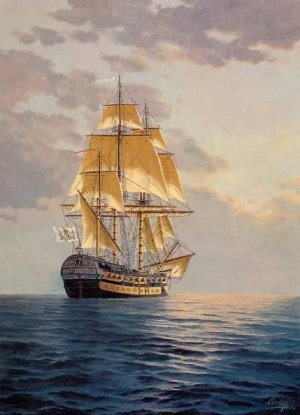
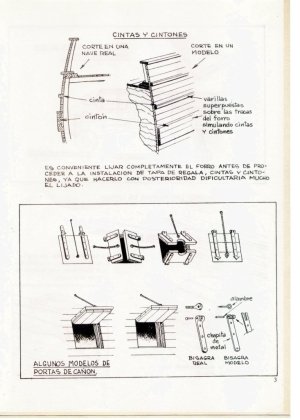
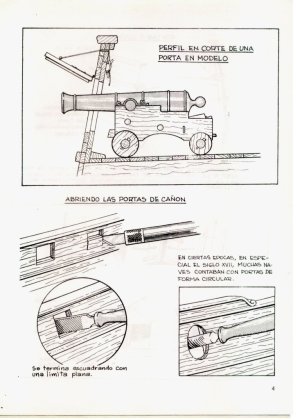
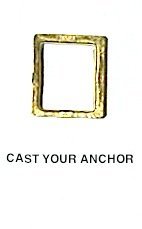
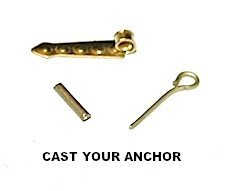
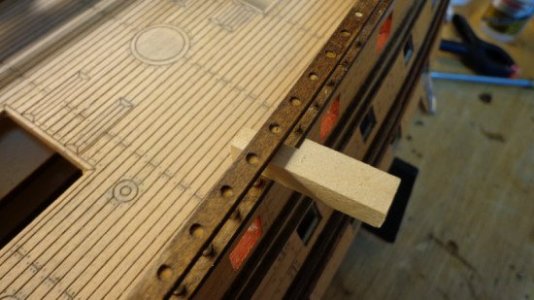
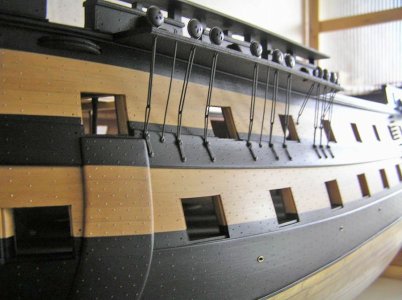
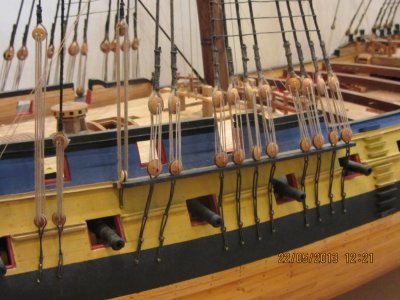
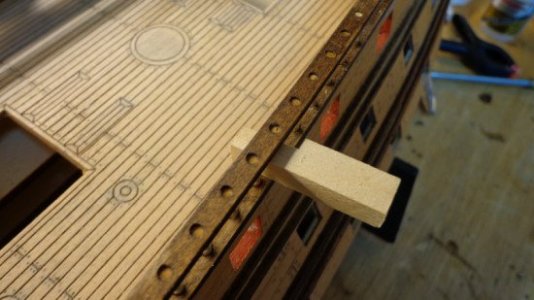
I have many more and more detailet -when I find them.
mut this are a start
el capi









As I mentioned previously, at the scale we generally build in, these small increments will not be noticeable.
the ports on the lower deck and the square ports in the transom are about 72-75 cm wide and 74-77 cm tall (interior of the opening; the port lid would be about 10 cm/4 inches larger in both dimensions) and the ports of the middle deck are about 67 cm wide and 62-65 cm tall
I agree that it will likely be unnoticed by most viewers because many folks do not know they were supposed to be different. Using Vasa as an example:
at 1:96 scale the lower ports would be 7.5mmX7.7mm and 7mm X 6.5mm for the middle deck. (I hope my math is correct
This is a difference of 500 to 1200 microns. The human eye can detect differences of about 70 to 100 microns. Many probably would not care, and as with all things in our hobby, it is totally up builder if this kind of thing is important.
Allan
Thank you very much Neil for your response. Did you get this from the Arthur Britton Smith book Legend of the Lake? I would have loved to meet him. He was a veteran of the Normandy invasion and lived to be 103 years old. For a heart rending few moments, the following interview is worth watching. Sorry to go off track, but sometimes research yields wonderful side information and this find made my entire week!Thanks Alan, there are 5 sweep ports on each side, also two sheave ports each side.
Allan
Not sure the size of the shot for my ship but there are 16 40 mm guns on the lower deck and 6 smaller 35 mm guns for the upper deck.
I made the inside openings 15 x 15 mm.
What I've done is cut the the ports top to bottom on about a 75 degree angle, so one side is thicker than the other to match the bulkheads.
Then filed them just proud of the bulkheads.
Seems to be working. Glad there's two sides to a ship.
Thanks Neil
I made the inside openings 15 x 15 mm.
What I've done is cut the the ports top to bottom on about a 75 degree angle, so one side is thicker than the other to match the bulkheads.
Then filed them just proud of the bulkheads.
Seems to be working. Glad there's two sides to a ship.
Thanks Neil
No it's actually in the plans for this ship.Thank you very much Neil for your response. Did you get this from the Arthur Britton Smith book Legend of the Lake? I would have loved to meet him. He was a veteran of the Normandy invasion and lived to be 103 years old. For a heart rending few moments, the following interview is worth watching. Sorry to go off track, but sometimes research yields wonderful side information and this find made my entire week!
Allan
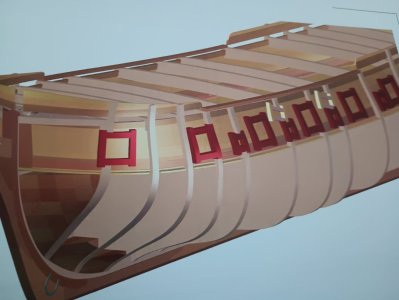
Hi Neil,
Which plans? The RMG contemporary plans omitted them, thus my confusion and reference to the A. B. Smith drawings. How would these be installed on a POB? For a fully framed model it is straight forward, but not so much for POB. As they are so small I am guessing it is best to just cut holes in the planking and glue in the 12X10 lids and hinges.
Allan
Which plans? The RMG contemporary plans omitted them, thus my confusion and reference to the A. B. Smith drawings. How would these be installed on a POB? For a fully framed model it is straight forward, but not so much for POB. As they are so small I am guessing it is best to just cut holes in the planking and glue in the 12X10 lids and hinges.
Allan
Just forget the Rmg plans lolHi Neil,
Which plans? The RMG contemporary plans omitted them, thus my confusion and reference to the A. B. Smith drawings. How would these be installed on a POB? For a fully framed model it is straight forward, but not so much for POB. As they are so small I am guessing it is best to just cut holes in the planking and glue in the 12X10 lids and hinges.
Allan

